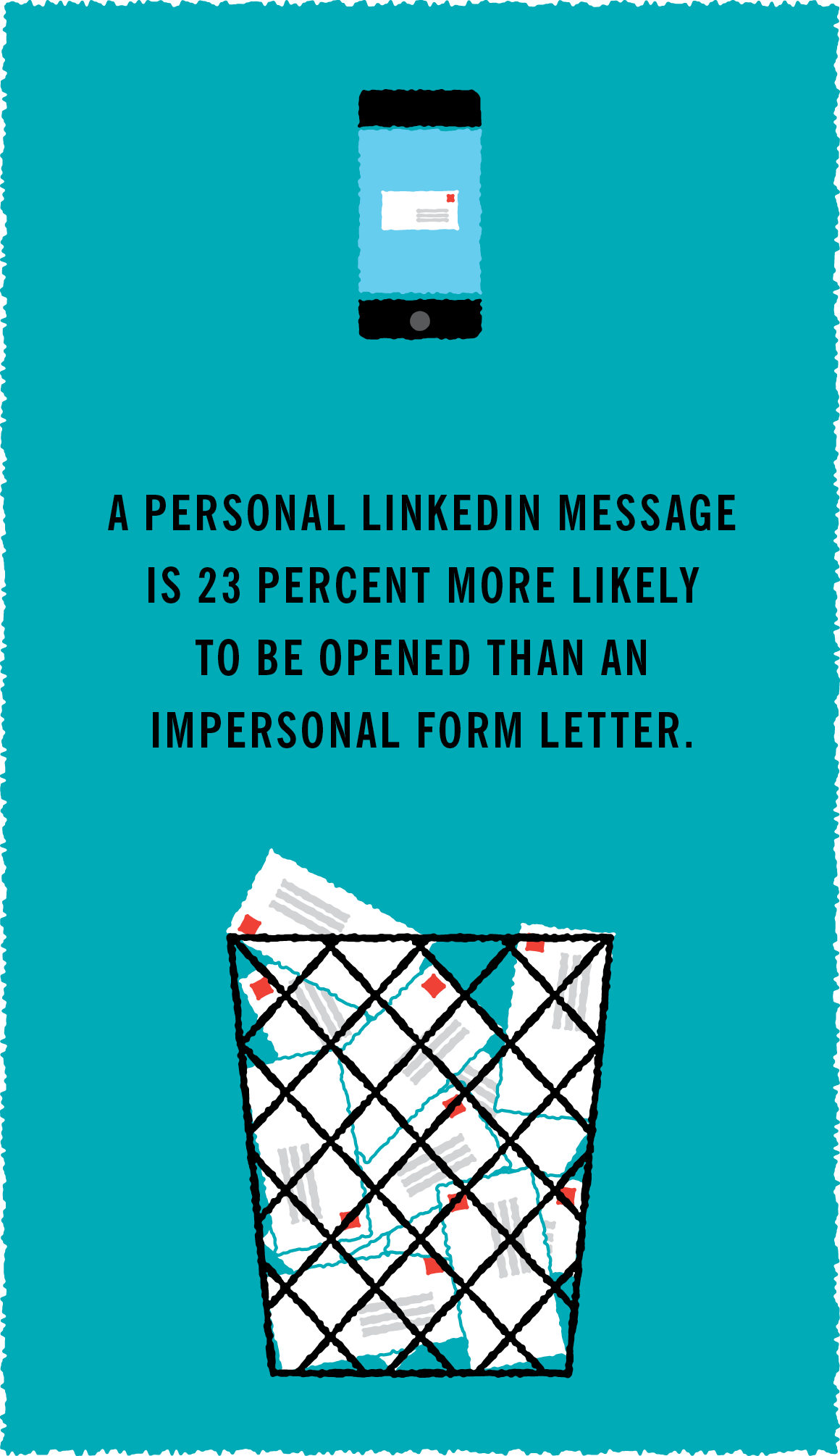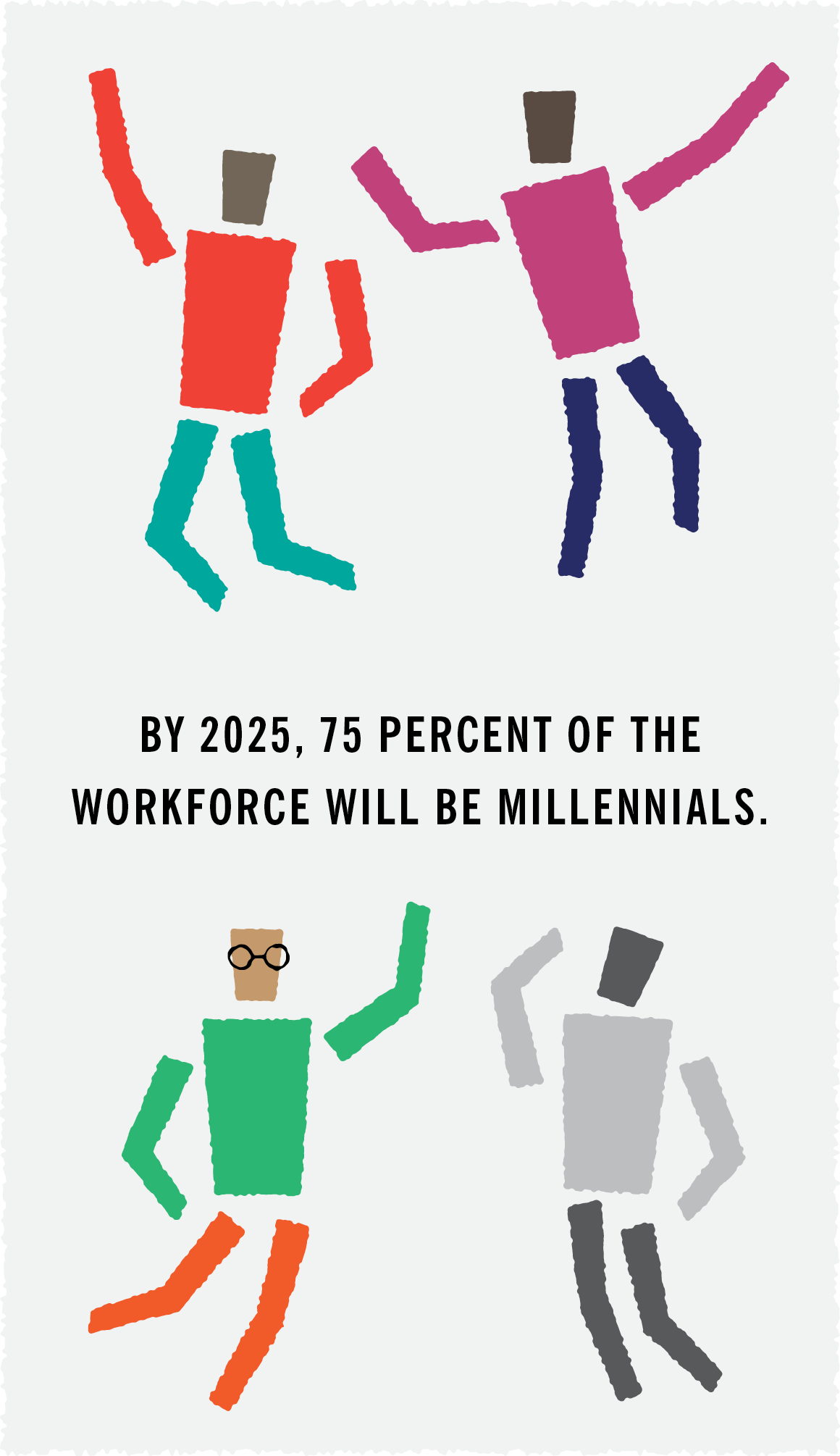According to a Forbes study, by 2025, 75 percent of the workforce will be millennials! If recruiting, as an industry, continues to see millennials as the “problem children” who are forcing us to change rather than allowing us to continuously innovate our process, there will be a major wake-up call in a matter of years.
When you look at the primary function of recruiting—to attract, engage, and retain top talent—the key elements remain the same, regardless of the generational shifts:
- Candidates are looking for personalized and transparent communication.
- The company needs to differentiate itself in the marketplace—e.g., through culture, flexibility, career growth, etc.
- The recruiter needs to be able to assess for key skills and company fit.
With communication, culture, and assessment as a baseline, the ability to recruit innovatively is almost limitless.
The improvements in technology and the availability of information online (about both the candidate and the company) have taken recruiting communication well beyond the cold call and the paper resume. But if we are using technology and availability of information only as the driver for change, we may lose the audience and just be innovating for innovation’s sake.
This is where we really need to look at the target market. As we begin to consider some of the generational traits—affinity for technology and convenience, strong entrepreneurial spirit focused on collaboration, or the value of flexibility over compensation—we start to form a picture of this ever-growing workforce. A plethora of organizations have done the research and have well-developed pictures of this generation. Again, just Google “millennial” and you will be amazed to see how much is out there.
So, if we know this much about who we are recruiting, why are we reluctant to use this information to look at our processes and understand how to attract, engage, and retain this top talent?
Communication
Although the method and pace of communication may continue to change, the millennial cry for a personalized message is not unique. A personal LinkedIn message is actually 23 percent more likely to be opened than an impersonal form letter. Actually reading a candidate’s profile is time well spent for today’s recruiter. Millennials want to know we have done our due diligence, just as they will likely do prior to responding by visiting our company’s website, glassdoor.com, and social media. We need to look beyond LinkedIn to fully personalize our communication. The appropriate forums are dictated by the company culture and industry.
Areas such as field-related meetup events and industry-specific blogs can open up communication opportunities that are personalized, but also ensure that recruiters are reaching the “right” candidates.
Once we have initially connected with candidates, an applicant tracking system (ATS) can help grow the relationship and increase communication touchpoints—functioning more like a customer relationship management (CRM) system. In fact, recruiter.com predicted the death of the ATS in its trends report back in 2013. The shift in the demanding needs to engage passive candidates and build relationships—rather than serve as a simple database—has resulted in a push for innovation.
A variety of ATSs can integrate with communication methods (LinkedIn, Outlook), producing much-needed metrics, and ultimately, offering their own relationship management modules or integration with CRM systems. Don’t be sold on the latest and greatest. Spend time looking at your current process and your needs before investing, but be sure you have a strong ATS/CRM in place.
As the balance of power in the job market continues to shift to the candidate, recruiters are scrambling for the attention of top talent. Virtually everyone in the workforce is connected over some type of mobile device. Shouldn’t this also be the primary point of contact with a candidate? Have you viewed your job description from a cell phone recently? That is really a lot of text to read on your phone.
One trend that is consistently bubbling to the top is the use of video. Video interviewing and video job descriptions are among the many opportunities to add video to the recruiting communication toolbox. Video accounts for 50 percent of all mobile traffic, and we should adopt this format to continue to drive traffic to our own career pages.
We need to consider what millennials want most: the opportunity to be heard and to have transparency. Video interviews allow the candidate to be heard outside the standard resume. Video job descriptions, or even video biographies of current employees, can also provide the transparency millennials are looking for. They can start to get a tangible picture of the company’s culture.
Before moving on to culture, let’s talk about a personalized approach after an employee is hired. Onboarding is a new hire’s first impression as an employee; it should not be a “one size fits all” approach. For example, one company created a personalized onboarding program and discovered that those who went through this program were actually 32 percent less likely to quit than those who went through the standard onboarding. This continued push for personalization goes well beyond just recruiting.
Company Differentiation
Now that we have the candidates’ attention, how do we sell them on the company? You have to differentiate yourself in the marketplace. Millennials seek flexibility, career growth, and a strong company culture. The relationship between marketing/branding and recruiting comes into play. What is your company culture? Can you describe it? How can someone who is not part of the company get a tangible sense of this? How you convey your company culture depends on what that culture is. Your approach needs to resonate with that culture.

If virtual reality is a bit of a stretch for your culture, consider a virtual tour of your office. It could be a video or even a simple slide show. Allowing candidates to visualize the environment they could join is extremely valuable. Some companies go even further, incorporating gamification into their digital presence. Companies can use gamification to attract the right type of candidate, or for “in process” candidates to further understand the role and culture.
Marriott was one of the first companies to receive a lot of press for attracting candidates with this approach. My Marriott Hotel is a virtual hotel operations game that allowed gamers to create their own hotel restaurant. In under a month (and keep in mind, this was back in 2011), My Marriott Hotel had more than 12,000 active users and generated more than 270,000 page views.
Regardless of the way you differentiate your company to the millennial, you must convey your culture and have a digital presence.

Assessment
Now, you have engaged millennial candidates through personalized communication and attracted them to your company culture. How do you assess them? Asking them for their five-year plan is not going to get you far. We need to move outside of the standard interview questions and make sure we are asking the “right” questions, not wasting time on rehashing data you already have. Also, make sure the “right” person is asking the questions.
Use the candidate’s digital presence to build out a profile and understand what questions to ask. From her social media presence to her blog, examples of a candidate’s work and passions are available for the world to see online. As recruiters, we need to spend more time generating full digital profiles of our candidates and using them to our advantage in the assessment period.
Any assessment should consider a 360-degree view. The candidate should meet not only with leadership, but with peers. From an HR perspective, the 360-degree feedback process is commonplace; millennials value the input of peers. Peers are the best ones to let you know not only if they think the candidate can do the job, but also how he or she would get along within the company culture. You can rely on peer input for culture fit, or go with a more formal assessment.
Job fit assessments can be based on occupational skills or behavioral traits. Assessing a candidate’s attitude and personality type through a more formal assessment has become more commonplace. These assessments not only supplement the full candidate profile and aid in decision-making, they become valuable resources for the candidates once they transition to employees. Using these assessments as a tool for self-awareness and development further plays to millennials’ desire for personal development within their jobs.
The UNC YEC study found that 65 percent of millennials said the opportunity for personal development was the most influential factor in their current jobs.
After reviewing the innovations and shifts within recruiting around communication, company differentiation, and assessment, it becomes obvious that recruiters can find a path that is not just innovative, but avoids the perceived “negative” millennial behaviors. We can choose to embrace the shift and be ready for the ever-increasing millennial candidate pool.
Looking at successful companies on a global scale, the shift has not only begun, but has moved well beyond Silicon Valley. Acknowledging and adapting to the generational traits that are so well documented is not just the future of recruiting, it is the way we need to approach our current processes and tools. By seeing this innovative generation as an opportunity, recruiters can become even more efficient and creative than ever before.
